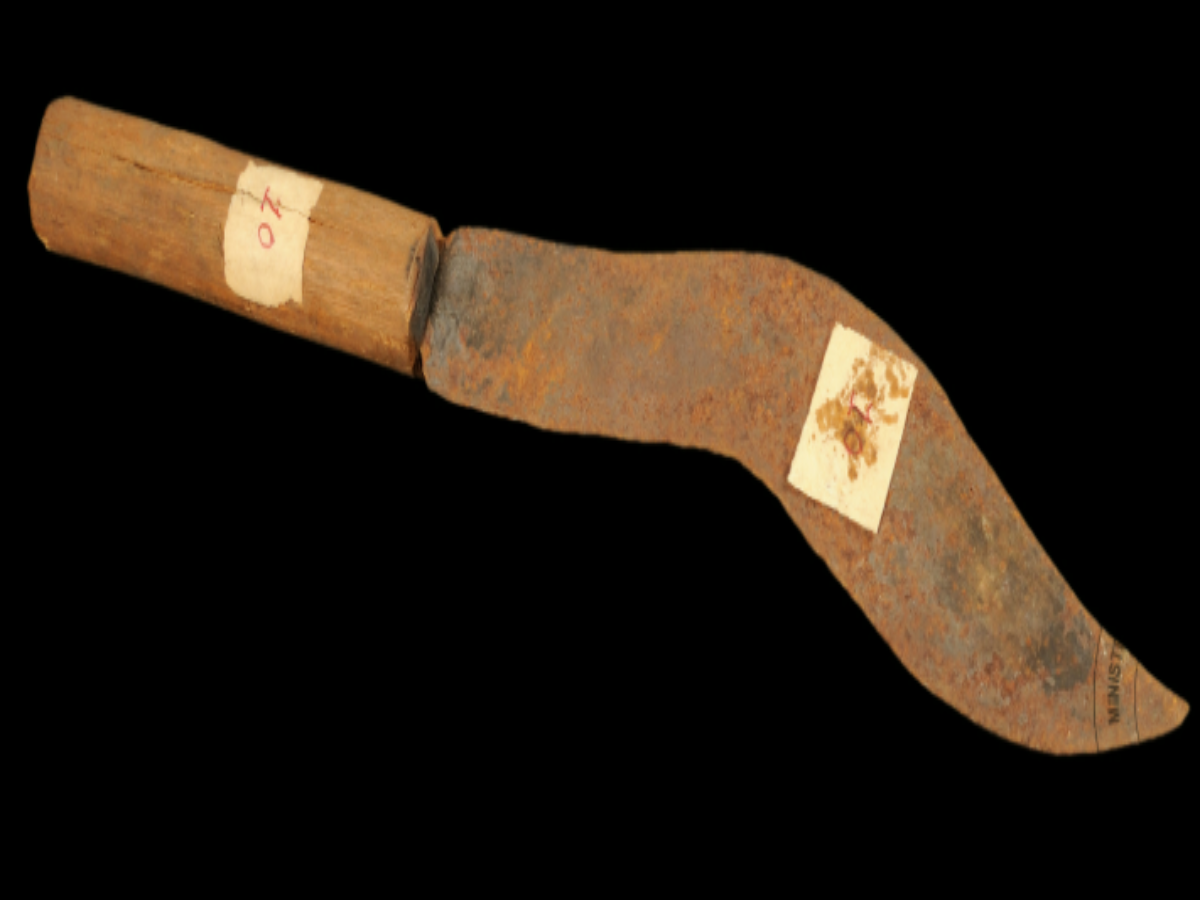State
Tribe Name
Art Type
short description
The 'Kati-Aka' is a traditional knife meant for use by the Gadaba tribes residing mainly in hilly terrains of Odisha and Andhra Pradesh. This totally aboriginal community is clearly known for its rich association with nature and its heritage highlighting craftsmanship through such tools like Kati-Aka meant for meeting the basic needs of life, such as cooking, agriculture, and forestry use.
Thumbnail

Filter Postion
Right
Filter Background
Off
Theme
Filter Header Image

content
Image

description
The 'Kati-Aka' is a traditional knife meant for use by the Gadaba tribes residing mainly in hilly terrains of Odisha and Andhra Pradesh. This totally aboriginal community is clearly known for its rich association with nature and its heritage highlighting craftsmanship through such tools like Kati-Aka meant for meeting the basic needs of life, such as cooking, agriculture, and forestry use.
The two major components of Kati-Aka are sharp iron blade and hollow wooden handle. These blades are forged into a sharp tip with a single sharp edge on one side and the back-flat face on the other side. It is ideally suited for cutting, slicing, or carving activities. Its sharp pointed tip offers some precision work, making it a much-desired and useful tool. The iron blade is tightly wedged into the wooden handle that has been ergonomically designed for comfort and ease of operation, especially when working for long hours.
Made by using materials found locally, Kati-Aka stands testimony to the reality that the Gadaba people are in close acquaintance with the environment around them, along with their ability to carry out metalwork and woodwork. It is also a spiritual mediator with both men and women, as much as the Kati-Aka knife is used as a work tool for them; it is really an integral part of daily life and an indicator of individual autonomy.
Undoubtedly, the incorporation of modern tools in tribal life is very much visible, but Kati-Aka is still an important cultural Artefact, often seen in museum collections and cultural exhibitions like the Indian Museum at Kolkata, where the identity of the Gadaba tribe is preserved for future generations.
The two major components of Kati-Aka are sharp iron blade and hollow wooden handle. These blades are forged into a sharp tip with a single sharp edge on one side and the back-flat face on the other side. It is ideally suited for cutting, slicing, or carving activities. Its sharp pointed tip offers some precision work, making it a much-desired and useful tool. The iron blade is tightly wedged into the wooden handle that has been ergonomically designed for comfort and ease of operation, especially when working for long hours.
Made by using materials found locally, Kati-Aka stands testimony to the reality that the Gadaba people are in close acquaintance with the environment around them, along with their ability to carry out metalwork and woodwork. It is also a spiritual mediator with both men and women, as much as the Kati-Aka knife is used as a work tool for them; it is really an integral part of daily life and an indicator of individual autonomy.
Undoubtedly, the incorporation of modern tools in tribal life is very much visible, but Kati-Aka is still an important cultural Artefact, often seen in museum collections and cultural exhibitions like the Indian Museum at Kolkata, where the identity of the Gadaba tribe is preserved for future generations.
Image Mode
landscape
promoted
On
Verified
Off
